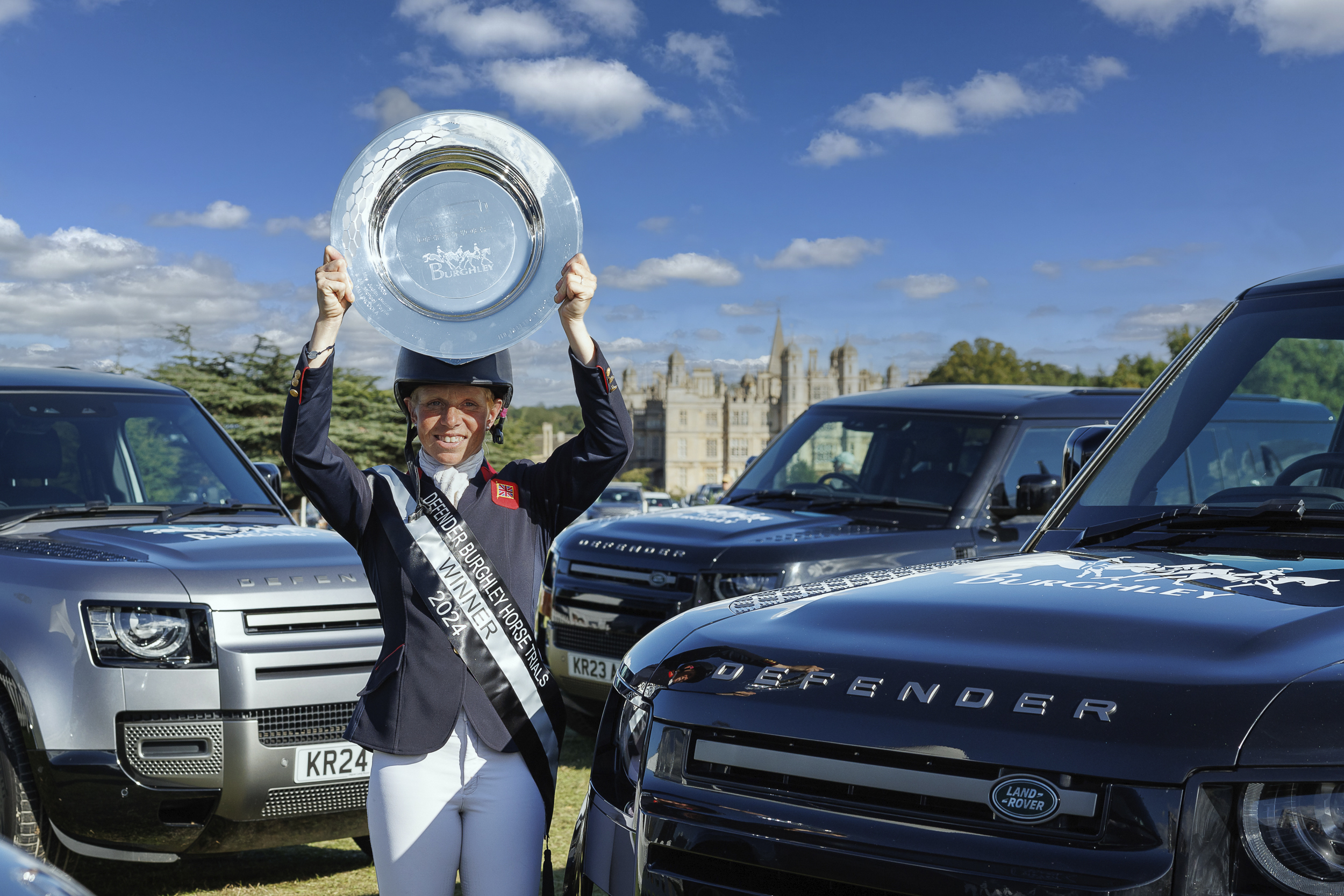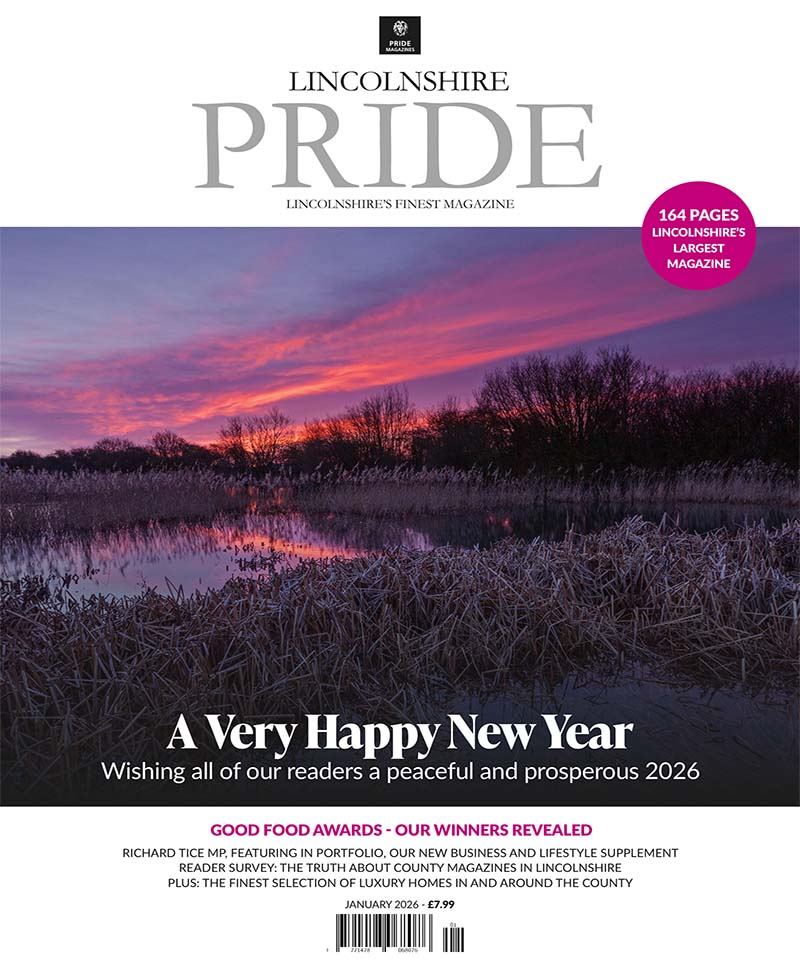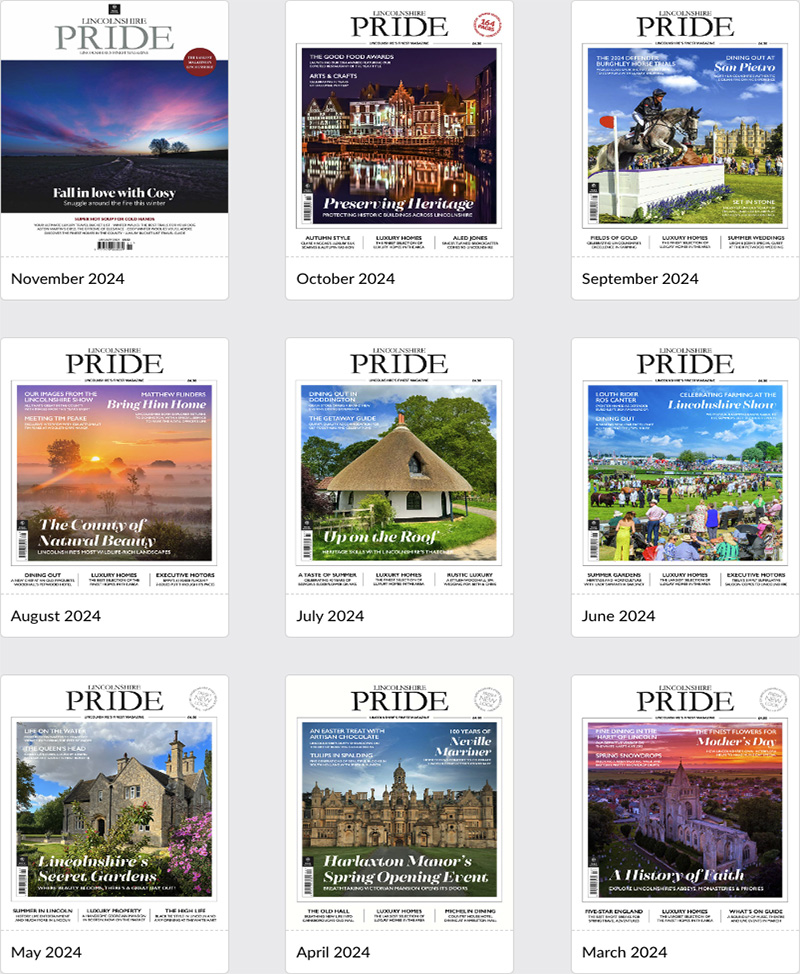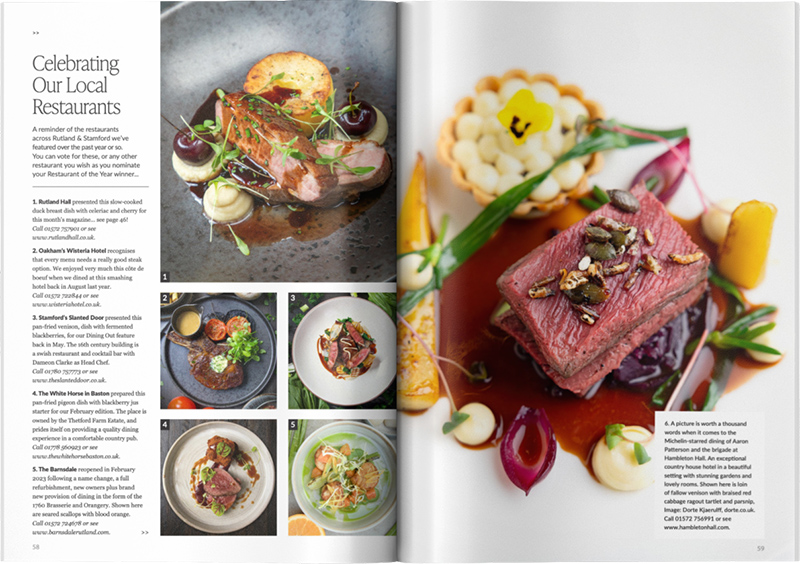
The Burghley Horse Trials 2025
Back to Burghley this month with world-class riders and horses offering a thrilling spectacle, and the usual combination of luxury lifestyle, shopping and fun!
Each September, the normally tranquil parkland of Burghley House is transformed into a spectacular celebration of equestrian sport, style and socialising as it welcomes more than 175,000 spectators for the world-famous Defender Burghley Horse Trials. The four-day event draws visitors from across the globe and generates an estimated £20 million for the local economy—making it not only a sporting highlight, but also a vital fixture in the region’s economic and social life.
Recognised as one of just seven CCI5* competitions in the world (the highest level in the sport) the Burghley Horse Trials forms the final leg of the prestigious Rolex Grand Slam of Eventing, alongside the Kentucky Three-Day Event and the Badminton Horse Trials. Riders must demonstrate versatility across three demanding phases: dressage, cross-country, and show jumping.
Last year’s victor, Lincolnshire’s own Ros Canter, returns to the grounds this season and shares her thoughts on competing, winning, and what makes Burghley so special in our interview over the page.
The scale of the event is immense. No fewer than 42 television cameras are required to capture the action, beaming it to a global audience, while 1,074 officials and volunteers ensure its smooth running behind the scenes. With a £400,000 prize fund up for grabs, the competition is fierce. But Burghley is about much more than elite equestrianism.
Over 600 trade stands transform the park into a vibrant shopping village, offering everything from fine country fashion and artisan gifts to luxury homewares and gourmet food. And with over 8,000 glasses of champagne expected to be enjoyed over the weekend, Burghley is as much a social occasion as a sporting one.
The 2025 Defender Burghley Horse Trials: Facts & Figures
£110,000 First prize for this year’s winners, from a fund of £320,000 prizes for the top 20 riders.
175,887 The number of spectators, along with 70 competitors and around 420 equines.
530 acres Area needed to host the event within Burghley’s 2,000 acres of parkland.
600 Number of trade stands at the event, plus more than 100 food stands and retailers.
23.6 Ros Canter’s score at Burghley in 2024 broke all previous records for the competition.
Six William Fox-Pitt has won the event on six occasions: 1994, 2002, 2005, 2007, 2008, 2011.
Three Competition Stages
Attracting elite international riders and 175,887 passionate spectators, Defender Burghley Horse Trials is a triathlon of equestrian excellence, spanning three distinct stages.
Dressage: The first phase tests precision, obedience and harmony between horse and rider. In a rectangular arena, competitors perform a pre-set sequence of movements, such as extended trots, halts and transitions, that are scored by a panel of judges. Each movement is awarded marks out of ten, with the goal of achieving grace, fluidity and poise. The emphasis here is on control and discipline, with penalties converted into points. The lower the penalty score, the better the performance.
Cross Country: Arguably the most thrilling day for spectators, the cross-country phase sees riders navigate Derek di Grazia’s 6,420 metre (four mile) long outdoor course comprising about 30 obstacles from solid fences to water jumps. It tests endurance, speed and bravery. Each combination is timed, with penalties incurred for refusals, falls, or for exceeding the time limit. This phase can dramatically shake up the leaderboard, favouring boldness and stamina over finesse.
Showjumping: The final day tests the horse’s athleticism and carefulness over coloured fences in a short arena course. Here, precision returns to the forefront, as a single knock-down or refusal results in added penalty points. With the scores already close after the first two phases, showjumping often becomes the decisive stage, demanding accuracy under pressure.
Together, these phases crown the most complete horse and rider partnership in the sport. Next, we meet Ros Canter who achieved the best ever finishing score in the event’s history.
Ros Canter returns to Burghley
Last year’s Defender Burghley Horse Trials winner was Ros Canter on the exceptional Lordships Graffalo. Having already won Badminton twice and captured gold at both the European Championships and Olympic Games, Ros’s win at Burghley was a hugely memorable moment in a golden 18-month run that has placed her firmly at the top of the international leaderboard.
Born in 1985 to Heather and Chris Canter, she grew up on the family’s mixed farm. Her mother, a local riding instructor, gave Ros her first taste of life in the saddle, and it quickly became clear that this was more than a hobby. After studying Sport Science at Sheffield Hallam University, she returned home to pursue eventing professionally and the rest is hard work, history and horses.
“We often have our horses all the way through their careers so we start them as young horses, maybe as five-year-olds. Normally they don’t get to Burghley until they’re around eleven years old at the earliest. Often you have horses that have quite a lot of potential and you hope that they might one day get to Burghley, but there might be hurdles to cross along the way.”
“I had one called Pencos Crown Jewel who went round Burghley twice. Every time she stepped up a level, I thought it would be her limit, but we had such a great partnership and she loved the job so much that she ended up becoming a competitive Burghley horse.”
“It’s quite hard to always identify whether a horse will go around Burghley, but they definitely need to have a big love for the job, a big heart, and it really helps if they have a lot of stamina because Burghley is very physically demanding on them.”
“A lot of time goes into preparing and building a relationship with a horse to get to five-star level and compete at an event like Burghley. The relationship often starts as young as five. With Lordship’s Graffalo, my best horse, I started, I was the one who taught him from the age of three.”
“We’ve had a long relationship together and that involves riding the horses five to six times a week, really understanding their personality, understanding their physical needs, and appreciating the fact that some horses need more time than others to turn them into real athletes.”
“They have a fitness training programme, a technical training programme to make them good at the dressage and we train for the jumping as well. There’s a lot of time spent training, but also away from that there’s a lot of time put in from my staff and my team at home managing each horse’s daily routine to make sure they’re happy, fine-tuning their feeding programmes to make sure they’ve got enough energy when they get to the competitions and everything that goes around that too.”
“They’re very much treated as elite athletes and there’s a whole team and system behind that; physios, vets and so on, so it’s a long and time-consuming effort.”
“In terms of preparation for a current year’s Burghley, we tend to have a ‘spring aim’ for the horses so for example, you might well have a horse that goes to Badminton as a five-star event in spring or you might have a horse that goes to Luhmühlen to do a five-star in June. Normally by the end of June, we start to build a plan for the rest of the season with a horse.”
“If that includes Burghley I start to work back from the event. They’ll want probably two preparation runs, the last one will be about a month before Burghley, and an event that would be a level down from Burghley, perhaps a shorter version. It’s a really good stepping stone to their fitness.”
“From their fitness work at home we work back six to eight weeks before Burghley, and that’s when we gradually increase their fitness programme and then taper off about ten days before the competition actually starts. From the end of June or the start of July things start to rev up in the preparation for an event like Burghley.”
“We tend to arrive at Burghley on the Tuesday. The veterinary inspection starts on a Wednesday and then the actual competition starts on a Thursday. When we arrive, the first thing we do is have the horses inspected by the vets where they also have passport checks and temperature checks to make sure they’re healthy and they are indeed the horses the organisers think they are. We get the horses settled in their stables, we get the stables bedded down and make sure they’ve got food and water, then it’s time to kind of set up our camp.”
“All the kit for the horses comes off in trunks and they go by the stables so that everything’s on hand when we need it and then our lorry gets parked up fairly close to the stables and we get that all set up for the week. We clean out the horse area where the horse has travelled, we get that all matted down and set up so we can put our suitcases and our kit in the back to give us more space. That’s the first few hours when you arrive at Burghley, and it’s when the mental side kicks in too.”
“When I arrive at Burghley, I’ve already had a thought about how I want to behave when I’m there too. You want to come across as confident, to have good posture. But the real thoughtful side of it starts on Wednesday as you get closer and closer to your competition day.”
“Even the vet check itself can be quite a nerve-wracking experience because you’ve put so much hard work and effort in, to get the horse to that point. It’s so easy for something to go wrong, even on the walk-up to the veterinary inspection. A horse might trip and lose a shoe and go a bit sore, for example. So it’s always a big relief to get that bit out of the way.”
“After that it tends to be very busy. Along with the vet check on the Wednesday, there’s also a briefing and then the cross-country course is open for walking too. We tend to walk the course about five times throughout the week before the Saturday morning and each course walk will take approximately two hours.”
“We’ll complete a course walk on the Wednesday, and for Thursday’s dressage we’re normally allowed to walk around the main arena to familiarise the horses with the space. There’s plenty of training going on, practising, getting everything ready.”
“There’s not a huge amount of time for sitting around and wondering how I feel, but we factor in time to deal with the mental side. I’ll make sure I catch ten minutes here and there to sit down, to visualise how I want the week to pan out and try get myself in the right frame of mind.”
“Each discipline is extremely difficult, and the challenges with the dressage stage at five star level is that when you get to a competition like Burghley, you’ve done an awful lot of fitness work to make sure that the horse has the stamina and the speed for the cross-country phases.”
“That often means that the horses will be a little bit more excitable and harder to settle for the final phase. Particularly when you get lots of people watching and there’s lots of atmosphere, it can tend to send the horse a little bit over the edge. There’s definitely a challenge with each horse in the understanding of their personality, understanding what the atmosphere might do to them and what impact it might have on how they’re going to listen and perform. You work out a pre-warm-up routine in the days before and on the morning of the dressage stage to make sure that you can try and optimise their performance when you actually get into the arena. That’s probably the biggest challenge; coping with each horse’s individual personality when they’re very fit.”
“I really do love the dressage. I love being able to train the horses, to do different movements. And I think I love it because I think the better the horse goes on the dressage, often the easier they become in the jumping phases. I think there’s a real link to that.”
“The challenges for the cross country are huge. It’s a long round. It’s a massive stamina test for horse and rider. You gallop the horses for probably eleven and a half minutes at Burghley, so that’s quite a lot to ask on a rider’s concentration levels.”
“A lot has already gone into preparing and walking the courses to make sure you have a plan, but the thing about cross-country is that plans often have to change in a split-second because things often don’t go how they’re supposed to go.”
“The challenge is always being able to react to what’s happening underneath you on the day and to know exactly how you think your horse might behave, being ready to adapt at any time. Cross country is the stage that I have a slight love-hate relationship with. I guess it’s where you get a real kind of spike of nerves and adrenaline.”
“On the Saturday morning I wake up early, because I can’t get to sleep – thank to the nerves and adrenaline – I think for a brief moment that I wish I was a spectator for the day or I could just go off into Stamford and do a shopping or something different! But only for a moment! The feeling of galloping round Burghley, hearing the cheers in the crowds and when something goes really well… it’s an incredible feeling.”
“When you reach the finish and you know that you’ve done the job, and if it’s all gone really well, there’s no other feeling like it. Likewise, with the show jumping, if you’re in a competitive position for the show jumping, the challenge is definitely met with a great deal of pressure.”
“It’s reverse order, so the better you’re doing, the longer you have to wait to have your turn, which means more people there are watching and there’s even more intensity.”
“The other challenge is that the horses galloped for 11 minutes the day before. They’re not always the same horse as the one you’ve been preparing in the weeks approaching the competition. But the show jumping is probably the round that I love most. When it comes to something as intense as Burghley, I love it when it’s over, and when I feel like I’ve done the best I could for the horse I’m riding.”
“There are always points that you think you can win. But for me, it’s very important that I stick to the process, visualise how I want to jump a clear round and not get distracted by the feeling of winning. I tend to perform much better if I just think about the process.”
“It’s an amazing feeling to win something like Burghley though. The emotions are very mixed. Firstly, it’s a relief. Relief that you’ve done the right job, that you’ve ridden well, that you’ve shown off the horse to the best of its ability, and that you’ve been able to pull it off for the team of people that support you. That team includes the owners of the horses and everybody that helps us to get to Burghley.”
“And then just… elation, I think. It’s an amazing feeling, being able to gallop round with the crowd cheering and for them to appreciate what’s just happened and for everybody else to get behind it too. You kind of just feel very satisfied as well.”
“After Burghley, there’s the prizegiving ceremony, and then you’ll tend to go straight to the media tent to do interviews. Then what happens after Burghley is that we all go home as soon as possible! It’s a fairly quick packup and everybody heads off, generally because we tend to be very busy and because we have other horses to compete. The ball has to keep rolling.”
“We’ll get home on Sunday evening and first thing Monday morning we’ll be out on the other horses. It’s likely there will be a competition within three or four days of winning Burghley on some of the other horses, so there’s never much time to stop and to take it all in!”
“If things go very well, we definitely stop the following day at lunchtime and have a glass of fizz with everybody at home that’s helped me to get to that point. And if it’s gone really well, we tend to organise a party at the end of the year when everything has slowed down a little bit!”
“Burghley is just a very special event. Being local and in Lincolnshire, I’ve been going to the event for many, many years, but it’s not just that. It just has a fantastic feel about it. Even though there are thousands of spectators at the event, everything still feels quite calm. The way the site is managed from a horse’s point of view is superb, they’re always so well cared for. There’s never a rush; the horses get very relaxed in their stables.”
“There are so many things to love about Burghley. The countryside is amazing, the house is beautiful and it’s got a real magical feeling about it. It’s so nice in fact, that I do miss not being able to be a spectator, especially when I’m getting nervous and I think, ‘gosh, I’d just love to be able just to wander around the shops for the day’ and things like that… but the reality is I am a competitor and there’s no better feeling than winning!”
Defender Burghley’s 2025 Cross Country Course
Saturday is regarded as one of the most exciting days for spectators of Defender Burghley Horse Trials, as that’s when the cross-country element of the competition takes place. This year is set to be especially exciting though, thanks to a radical change by course designer Derek di Grazia.
For 2025, the cross-country course will be reversed, so competitors will encounter iconic obstacles such as the Lion Bridge much earlier in their round.
In addition, competitors will face a number of new obstacles which will be revealed during the event’s Press Day in August. Typically the course is four miles long and comprises around 30 obstacles. Derek took over from Captain Mark Phillips in 2022
and is charged with the responsibility of designing a course which is challenging yet fun for horse and rider. His previous work has seen him design courses for Tokyo’s 2021 Olympics and Defender Kentucky, securing his reputation as one of the world’s most renowned course designers. Previous Defender Burghley Horse Trials course designers since the event was first held in Stamford in 1961 have included Bill Thomson, Lt. Col. Henry Nicoll, and Mike Tucker.
Food & Drink at Burghley
Burghley Horse Trials is as much a treat for food lovers as it is for equestrian enthusiasts. Across the event, visitors can sample and take home artisan produce, including fine meats from Grasmere Butchers and local specialities from Launde Farm Foods. For refined dining on-site, The Members’ Restaurant and the elegant Avebury Restaurant offer a more formal experience, with afternoon tea served at the Trot Up, complete with fizz courtesy of another Defender Burghley sponsor, Pol Roger. For those glamping at Burghley, the luxury doesn’t stop at the canvas; guests can enjoy a licensed bar on-site for evening drinks and relaxed socialising.
Luxury Shopping
With over 600 carefully curated trade stands, Defender Burghley Horse Trials offers one of the most prestigious shopping experiences in the British sporting calendar. From luxury country fashion and fine leather goods to bespoke interiors, art, and jewellery, the event brings together an exceptional array of premium brands and artisan makers. Whether you’re seeking timeless tailoring, exquisite gifts or unique homeware, the shopping village at Burghley has it all… over the page, we’ve a few of our favourite luxury brands from the event.
Unstoppable 4×4 Vehicles
As the title sponsor of the Defender Burghley Horse Trials, Land Rover plays a key role in the event’s experience both on and off the course. Visitors can enjoy off-road demonstrations and explore the marque’s latest models, including the new flagship Octa with its 4.4 V8 engine. Younger guests can get behind the wheel of electric Defender toy cars, while owners arriving in Land Rovers or Range Rovers will benefit from dedicated, preferential parking, adding convenience and style to one of the sporting calendar’s most prestigious events.
Young Event Riders and Competitions
Away from the main competition, there’s a trio of crowd-pleasing competitions to add extra excitement to the event. The LeMieux Pony Club Team Jumping is a spirited and fast-paced contest, showcasing the skill and confidence of young riders representing their regional teams. Always a highlight for families, it reflects the grassroots enthusiasm that feeds into future equestrian success. Equally compelling is the Dubarry Burghley Young Event Horse class, which offers a fascinating glimpse into the sport’s future stars. Judges assess each horse’s conformation, movement and jumping potential, making it a must-see for serious followers of eventing. Meanwhile, for sheer delight and entertainment, the Shetland Pony Grand National never fails to charm. Tiny riders thunder around the track on their equally diminutive mounts, to the joy of crowds!
Don’t miss a moment of the action with Burghley TV
For those unable to attend in person, Burghley TV brings the action of the Defender Burghley Horse Trials directly into your home. For just £25, viewers can enjoy comprehensive live coverage of the event, including expert commentary, behind-the-scenes access, and exclusive interviews.
The broadcast is fronted by well-known equestrian presenter Nick Luck alongside Tom Stanley, Tina Cook and Nicola Wilson, offering insight, charm and a deep understanding of the sport throughout the weekend.
From the elegance of the dressage to the thrill of the cross-country and the final showjumping phase, every moment is captured in crisp detail, allowing fans to experience the drama as it unfolds. Whether you’re following the competition from the comfort of home or keeping up with the action as you shop Burghley’s TV broadcast coverage ensures you won’t miss a moment of the competition’s action.
Burghley TV combines uninterrupted livestream footage of this most event, see www.burghley-horse.co.uk/burghley-tv.






